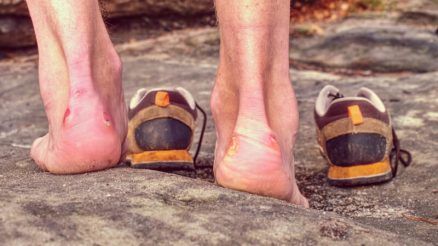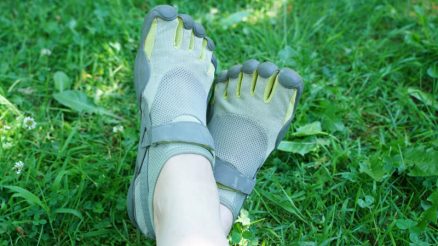For recreational joggers and elite marathoners alike, the way your foot meets the ground is a topic of perpetual discussion and, often, strong opinions. “Heel strike is bad!” shouts one camp, while another swears by the efficiency of a forefoot landing. But what’s the real story behind midfoot, forefoot, and heel striking? And what are the pros and cons of each?
Let’s dive into the mechanics and implications of these three primary foot strike patterns.
Understanding Foot Strike
Your foot strike refers to the part of your foot that makes initial contact with the ground when you run. While it might seem like a minor detail, it can significantly influence impact forces, injury risk, and running efficiency.
1. Heel Striking (Rearfoot Striking)
This is the most common foot strike pattern, particularly among runners wearing traditional running shoes with cushioned heels. As the name suggests, the heel is the first part of the foot to touch the ground.
Pros of Heel Striking:
- Natural for Walking: It’s the natural way most people walk, so transitioning to running with a heel strike can feel intuitive for beginners.
- Built-in Cushioning: Modern running shoes are often designed with significant heel cushioning, which can absorb some of the initial impact for heel strikers. This might feel more comfortable, especially on harder surfaces.
- Reduced Calf Strain: Because the heel takes the initial load, there’s generally less immediate strain on the calf muscles compared to forefoot striking.
Cons of Heel Striking:
- Higher Impact Forces: When the heel strikes first, it often acts like a “brake,” creating a significant braking force and a high impact peak. This jolt can travel up the kinetic chain to the knees, hips, and lower back.
- Increased Risk of Certain Injuries: The higher impact forces are often associated with an increased risk of impact-related injuries such as shin splints, patellofemoral pain syndrome (runner’s knee), and hip pain.
- Overstriding Tendency: Heel striking often goes hand-in-hand with overstriding (when your foot lands significantly in front of your body’s center of mass). Overstriding further exacerbates braking forces and can reduce running efficiency.
- Less Efficient Energy Return: The “braking” action means less forward momentum is generated from the impact, potentially leading to less efficient energy return from the ground.
2. Midfoot Striking
A midfoot strike involves the middle of the foot (the ball of the foot and the arch area) landing first, with the heel quickly following to allow the entire foot to make contact. This pattern is often considered more “natural” and is common among barefoot runners.
Pros of Midfoot Striking:
- Reduced Braking Forces: Landing closer to your body’s center of mass, the midfoot strike minimizes the braking effect seen in heel striking, leading to smoother transitions and more efficient forward momentum.
- Better Shock Absorption: The foot’s natural arch, along with the ankle, knee, and hip joints, are better positioned to act as natural shock absorbers, distributing impact forces more effectively across the leg.
- Lower Impact Peaks: Studies often show lower vertical ground reaction force peaks compared to heel striking, potentially reducing the risk of impact-related injuries.
- Improved Running Economy: By reducing braking and utilizing the body’s natural shock absorption, midfoot striking can lead to more economical running, meaning you use less energy to maintain a given pace.
Cons of Midfoot Striking:
- Requires Practice and Adaptation: For habitual heel strikers, transitioning to a midfoot strike takes conscious effort, practice, and time to adapt. Rushing the transition can lead to new injuries.
- Increased Calf and Achilles Strain: While overall impact is reduced, the calf muscles and Achilles tendon work harder to absorb shock and propel the body forward. This can lead to calf soreness or Achilles issues if not introduced gradually.
- Initial Discomfort: Runners accustomed to cushioned heels might find the initial feeling of midfoot striking on harder surfaces to be less comfortable until their foot and lower leg muscles adapt.
3. Forefoot Striking
Forefoot striking involves the ball of the foot landing first, with the heel often not touching the ground at all, or only very lightly. This pattern is typically seen in sprinters or distance runners moving at very fast paces.
Pros of Forefoot Striking:
- Maximized Propulsion: Landing on the forefoot allows for immediate and powerful push-off, leveraging the elasticity of the calf muscles and Achilles tendon for maximum propulsion.
- Very Low Braking Forces: Similar to midfoot striking, but even more pronounced, forefoot striking virtually eliminates braking forces, leading to extremely efficient forward motion.
- Potentially Faster Speeds: The quick ground contact and powerful push-off make it conducive to higher running speeds, which is why it’s dominant in sprinting.
Cons of Forefoot Striking:
- High Calf and Achilles Load: This is the most demanding foot strike on the calf muscles and Achilles tendon. The constant “on-toes” action can lead to significant fatigue, soreness, and a higher risk of Achilles tendonitis or calf strains, especially for distance running.
- Foot and Ankle Stress: The small bones and muscles of the forefoot and ankle bear a considerable amount of stress, potentially leading to issues like metatarsal stress fractures or plantar fasciitis if not properly conditioned.
- Not Sustainable for All Distances/Paces: While excellent for short, fast bursts, maintaining a pure forefoot strike for long distances can be incredibly taxing and unsustainable for most runners.
- Requires Strong Lower Leg Muscles: It demands strong, resilient lower leg muscles and tendons to handle the repetitive load.
Which Foot Strike is Right for You?
There’s no single “best” foot strike for everyone. The ideal pattern often depends on individual biomechanics, running goals, injury history, and the shoes you wear.
- If you’re injury-free and comfortable with your current heel strike: There might be no urgent need to change. Focus on reducing overstriding and increasing your cadence (steps per minute) instead.
- If you’re experiencing recurring impact-related injuries (knees, hips, shins): Exploring a transition to a midfoot strike, under the guidance of a running coach or physical therapist, could be beneficial.
- If you’re a sprinter or consistently running at high speeds: A forefoot strike might naturally develop and be advantageous.
- For most recreational distance runners: A midfoot strike is generally recommended as it balances shock absorption with efficient propulsion and reduced impact forces.
Making a Transition (If You Choose To)
If you decide to modify your foot strike, proceed with extreme caution and patience:
- Gradual Adaptation: Introduce the new foot strike for very short durations (e.g., a few minutes at the beginning of each run) and gradually increase the time.
- Focus on Cadence: Aim for a higher cadence (around 170−180 steps per minute). A higher cadence naturally encourages a shorter stride and a landing closer to your body.
- Listen to Your Body: Pay close attention to any new aches or pains. If something hurts, back off or revert to your old strike pattern.
- Consider Minimalist Shoes (Carefully): While not essential, running in shoes with less heel-to-toe drop (or even barefoot on soft surfaces) can help encourage a midfoot strike, but this transition demands even greater caution.
- Seek Professional Guidance: A running coach or physical therapist specializing in running gait analysis can provide personalized advice and drills.
Conclusion
Ultimately, the goal isn’t to force an unnatural foot strike, but to find a pattern that minimizes impact stress, maximizes efficiency, and allows you to run comfortably and injury-free. By understanding the pros and cons of midfoot, forefoot, and heel striking, you can make more informed decisions about your running form and enjoy your miles for years to come. Happy running!








